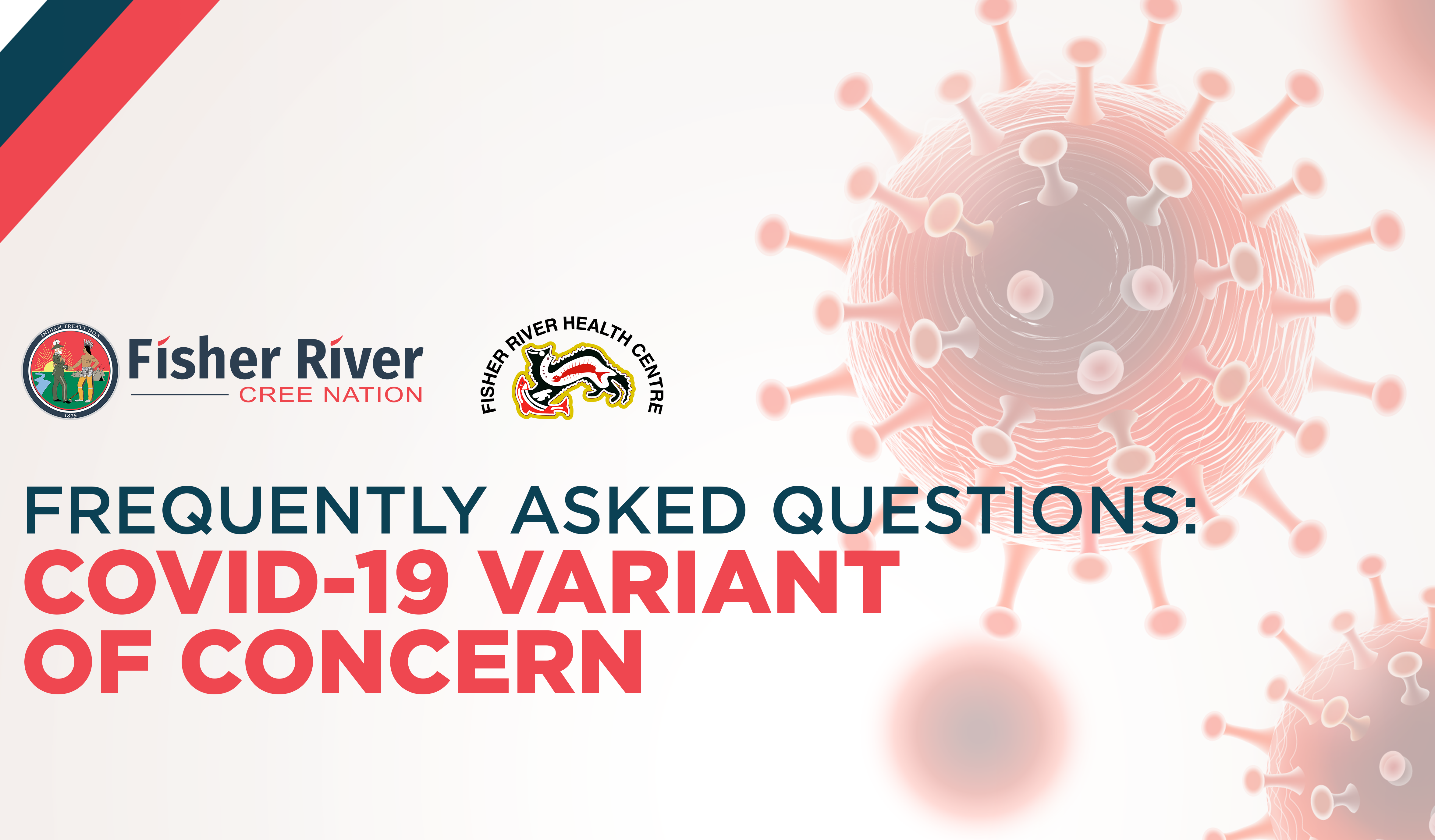Frequently Asked Questions: COVID-19 Variant of Concern
What is a COVID-19 Variant of Concern?
The virus that causes COVID-19, like all viruses, is constantly changing. These changes in the genes are monitored over time to see if they cause the behavior of the virus to change. In particular, we watch for changes that make the virus spread easier or that cause more severe illness.
Across the world there are 3 Variants of Concern (VOCs) being monitored:
- 1.1.7: First identified in the United Kingdom (UK)
- 1.351: First identified in South Africa
- 1: First identified in Brazil
Of these, B.1.1.7 (UK Variant) spreads more easily and appears to have a higher risk of reinfection, of lower vaccine effectiveness, and a higher risk of death. P.1. (Brazil Variant) appears to have a higher risk of reinfection and lower vaccine effectiveness.
How are COVID-19 VOCs detected?
Cadham Lab has developed a screening test that they use on swabs that have tested positive for COVID-19. This screens for some of the genetic changes that the VOCs have. Samples that screen as possible VOCs are then sent to the National Microbiology Lab for genomic sequencing which confirms if it is a VOC or not.
What COVID-19 VOC has been detected in Manitoba?
On Monday, February 8th, genomic sequencing confirmed the presence of a case of B.1.1.7 (UK variant) in a return traveler to Manitoba.
Are all the cases in Manitoba due to the COVID-19 VOC B.1.1.7?
No- only a small number of the cases have screened as being possibly due to this VOC. Others have screened negative and are the “wild type” (original) COVID-19.
What does this mean for the risk in First Nation communities?
The B.1.1.7 Variant (UK Variant) does spread more easily than the wild type COVID-19, so this is a concern in communities with conditions that already make respiratory viruses spread more easily like housing shortages. This means it is more important than ever that people limit close contacts with people outside of their home, follow all public health precautions, and that no large gatherings are held. Avoiding non-essential travel will help prevent this VOC from entering First Nation communities. If essential travel must happen, the fewest number of travelers possible should go.
What is the isolation/ quarantine for COVID-19 VOC Cases?
Cases need to isolate for 10 days.
Where should COVID-19 VOC cases isolate?
It is very strongly encouraged that COVID-19 VOC cases who don’t live alone isolate in Alternative Isolation Accommodations (AIA). This is very important to stop it from spreading to other people in the house and the community. The Nursing Station/ Public Health can arrange AIA through a provincial intake process.
What makes someone a close contact to a COVID-19 VOC case?
Compared to the wild type (original) COVID-19 virus, this VOC spreads more easily so everyone who lives in the same house as the case will be considered a close contact. Anyone who had direct, face -to- face contact (within 2 meters) without a mask on for more than one minute will be considered a close contact. Anyone who was within 2 meters for more than 5-10 minutes even if they had a mask on will be considered a close contact.
Can the Rapid Test tell if it is a VOC?
No, only the Cadham test and the screening test that follows can determine if a case is due to the VOC.
How long do close contacts need to isolate?
There are a few different answers to this question because it depends on the circumstances.
If the case is a household member who leaves the house to isolate in AIA: the close contacts in the house need to isolate for 14 days. Before the isolation period can end they need to have a test done at Day 10 and the negative results available. If the close contact refuses to have the test done at Day 10 then they must isolate for an additional 10 days which means 24 days in total.
If the case is a household member who isolates in the home: the close contacts need to isolate while the case is isolating (10 days) PLUS 14 days afterwards for a total of 24 days. Before their isolation period ends they need to have a test done (on day 20 of isolation) and have negative results available . If they refuse to have a test done, they must isolate an additional 10 days (34 days total). In addition: if any other household member tests positive the isolation period starts again. These very long periods of isolation are why it’s so important for cases to isolate in AIA. These time period also apply if close contacts (e.g. children) are isolating with cases (e.g. parents/ caregivers) i n AIA.
If the case is not a household member of the close contact: the close contact needs to isolate for 14 days. They need to have a test done at Day 10 and negative results available before isolation can end . If they refuse to have a test done, then they need to isolate for 10 additional days (total of 24 days). All household members of the close contact need to self-isolate as well until the close contact has received their negative test result after Day 10.





